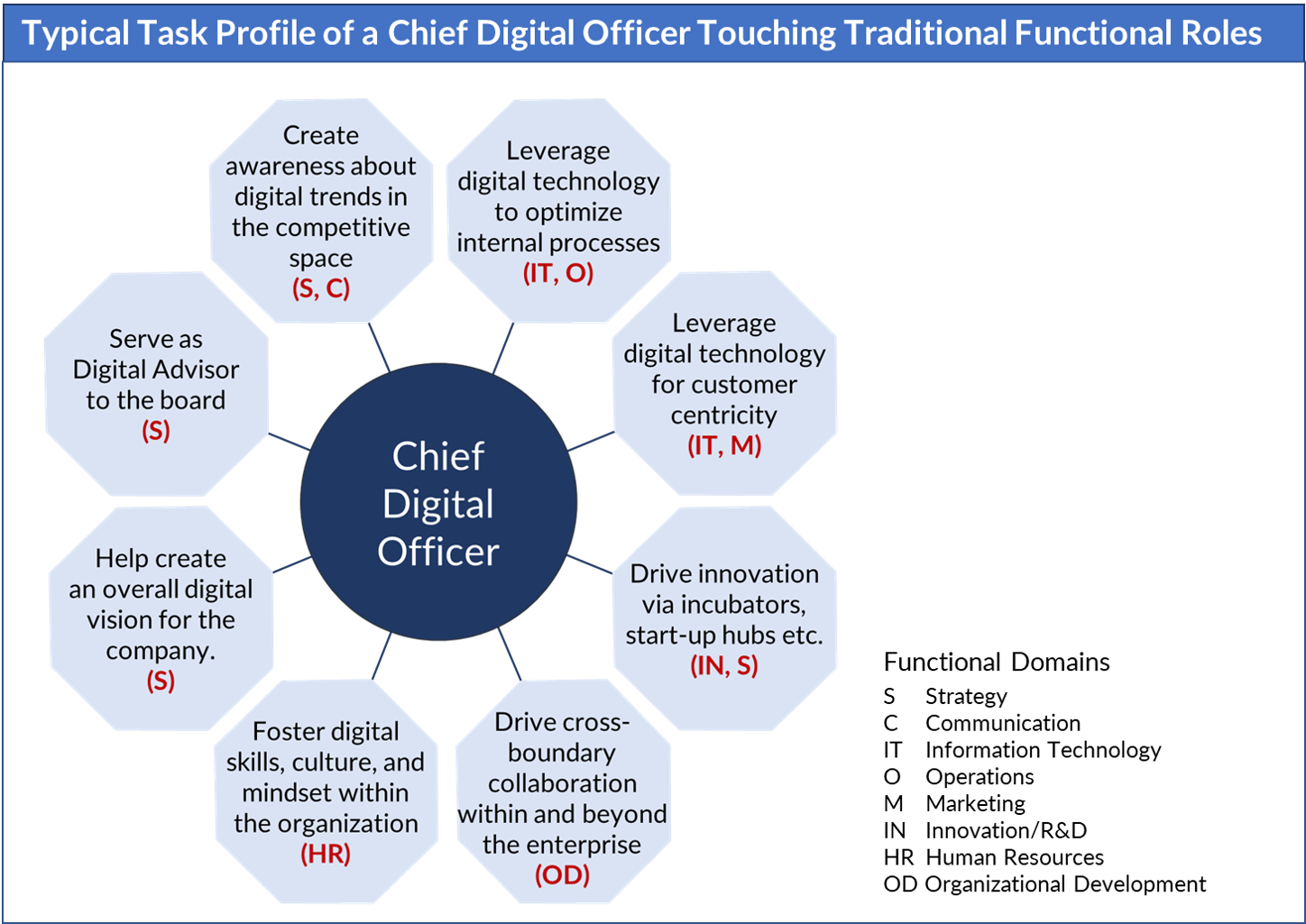When we asked how they organize their digital transformation efforts, we noticed a high degree of variety between the companies we investigated; not two of them looked the same.
We were not surprised; an organization’s governance set-up depends on a complex set of variables, which makes each case unique: their maturity stage in the transformation process; the degree of centralization/decentralization; the diversity of their business portfolio; their size and global reach; the industry context they are in; the perspective of the CEO and the top team on the issue; the micro-political dynamics among key stakeholders; the influence of consultancies; and more.
In addition, the transformation organization itself tends to be in constant change due to experiences and new intervening events.
Consequently, our sample of companies featured highly diverse approaches in their digital transformation governance:
- Bertelsmann, a traditionally highly decentralized organization with more than 100 businesses, does not have a formal head of Digital Transformation. Virtually all activities are left to the divisions, which are very diverse in their digital maturity and the ways in which they address their challenges.
- Daimler has launched a plethora of innovation initiatives on the divisional level, including a few promising new digital businesses. There is no Chief Digital Officer, but corporate initiatives such as the Leadership 2020 program and the Digital Life unit have been created on the corporate level to drive overall cultural change, and the focus on CASE[1], owned by the strategy department, provides overarching orientation.
- At Lufthansa, digital transformation activities are coordinated the VP of digital strategy, who works with a digital executive board that provides an institutionalized connection to key functional stakeholders. Among other activities, this remarkably lean function is orchestrating the company’s award-winning innovation hub in Berlin.
- Otto Group is also highly decentralized, with more than 100 businesses. A Culture Change Team on the corporate level supports businesses in their transformational efforts. In addition, Otto features a dedicated function for enabling networking, cross-boundary collaboration and knowledge transfer, contributing significantly to horizontal self-organization.
- At Siemens, we investigated a division consisting of three business units. Here, digital transformation efforts are coordinated by one of the three business unit CEOs, while specific responsibilities for various digital domains are distributed in a complex matrix involving both functions and businesses.
Lufthansa’s VP of digital strategy comes maybe closest to the role of a “Chief Digital Officer” (CDO), a new C-level position which has gained popularity in recent years as organizations try to coordinate their digital transformation efforts under one roof.
The massively multi-functional profile is a challenge for leaders who get tasked with the Chief Digital Officer role, and it is an equal challenge for the traditional operating set-up of an organization
A typical CDO works across the entire company on all the elements of the digital strategy and organization. Naturally, this encompasses a wide range of responsibilities. Specific job profiles will vary from company to company due to specific structural, cultural, and political conditions at the time the role is installed, but they usually cover a wide array of objectives, as outlined in the figure below as a typical example:
This massively multi-functional profile is a challenge for those who get tasked with the role, and it is a challenge for the traditional operating set-up of an organization.
As it often happens with new functions, the chief digital officer role is still in the process of finding its identity. Many organizations just add the CDO responsibility to functions they feel are closest to digital disruption: IT (often seen as the “owner” of everything digital) and/or Marketing (often seen as closest to the market that drives transformation).
However, while CIOs and CMOs undoubtedly play a central role in the process, their perspective is usually anchored in the traditional mental frameworks of their functional domain. They may lack important capabilities, e.g. in the area of cultural change, organizational design, talent or ecosystem management.
Leading digital transformation asks for the ability to comfortably deal with a portfolio of functions, operating models, industries, and mental frameworks. Given the high strategic priority of the topic, CDOs are usually important stakeholders and members of the inner advisory circle of the CEO and the board, in some cases even members of the executive board.
Leading digital transformation asks for the ability to comfortably deal with a portfolio of functions, operating models, industries, and mental frameworks.
All of the above implies that the CDO role is highly political. It stretches not only the capabilities of any executive; it implies also structural conflicts with all those functions that traditionally carry the responsibility for the respective domain. Which leads us to a more fundamental issue organizations face – the erosion of traditional functional roles – a topic we will discuss in the next installment of this series.
_________________________
[1] CASE is a Daimler-internal acronym for the fields of networking (Connected), autonomous driving (Autonomous), flexible use (Shared & Services) and electric drive systems (Electric). The four CASE fields are an integral part of the corporate strategy of the company. The aim is to shape intuitive mobility through intelligent dovetailing of the CASE topics. More at https://www.daimler.com/case/en/.
This article is the eighth part of a LinkedIn series about Digital Transformation Challenges in Large and Complex Organizations. It is based on a qualitative study conducted by the Center for the Future of Organization at the Drucker School of Management at Claremont Graduate University.
If you would like to get immediate access to the entire analysis of our findings, you may download an electronic copy of the report at no cost here, or get it as a physical booklet here. In return, we’d love to learn about your perspective – feel free to comment and/or share your experience with the subject. Thank you!
Other articles in this series
- Digital Transformation Challenges – Part 1: Introduction and Overview
- Part 2: Is Digital Transformation really so special?
- Part 3: The three buckets of digital transformation initiatives
- Part 4: The agility challenge
- Part 5: Agility in practice: the swarm organisation @Daimler
- Part 6: The ambidexterity challenge
- Part 7: The Connectivity Challenge and the Art of Dealing with Boundaries
Article by channel:
Everything you need to know about Digital Transformation
The best articles, news and events direct to your inbox
Read more articles tagged: Featured, Governance










